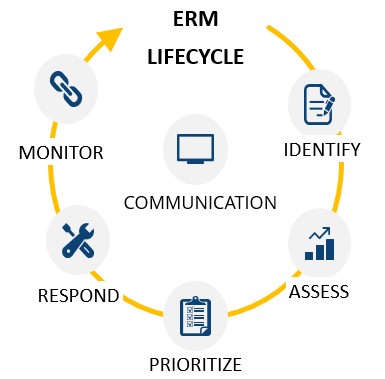What is Enterprise Risk Management?
ERM is a process that helps identify, prioritize, and respond to risks to improve decision-making and program outcomes in the face of uncertainty. The ERM lifecycle, detailed below, will allow DePaul to conduct repeatable risk assessments across the institution and address the most significant risks.
 Figure: The Enterprise Risk Management Lifecycle
Figure: The Enterprise Risk Management Lifecycle
Identify
Identify and categorize risks that impact the achievement of strategic goals and objectives
Assess
Apply risk rating criteria to evaluate overall exposure to the identified risks
Prioritize
Determine the most critical risks
Respond
Develop responses to accept, avoid, reduce, transfer, or exploit risk
Monitor
Provide timely and relevant updates to leadership on risk information at any point in the ERM life cycle